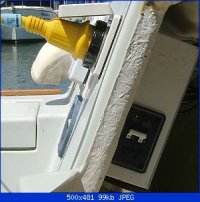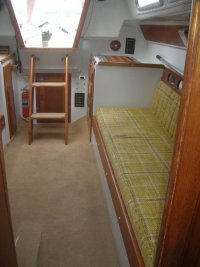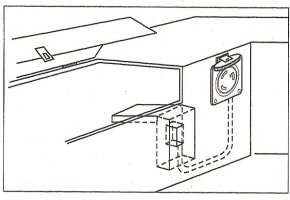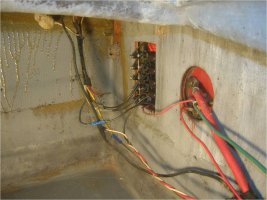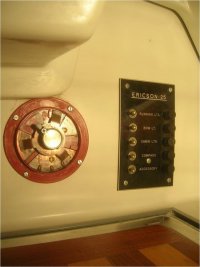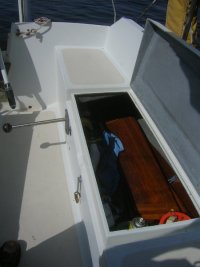davisr
Member III
I am currently researching my options in terms of rewiring my E25. One feature that I would like to add to the boat is a shore-power receptacle, so that, in the modest coastal cruising that I am planning on doing, I may stay overnight in transient slips from time to time for the purpose of recharging the batteries. I have been reading Don Casey’s books, This Old Boat and Sailboat Maintenance Manual, and have found them to be clearly-written and user-friendly. There are some areas, though, where I could use some additional assistance, one of which concerns shore-power connections to AC systems. Based on everything I have read, this is what I believe I should do (I have included brand names from West Marine catalogue that I have looked through, but have not settled on a particular brand at this point):<?xml:namespace prefix = o ns = "urn:schemas-microsoft-com ffice
ffice ffice" /><o
ffice" /><o ></o
></o >
>
1. Install Marinco brand, 30 Amp shore-power receptacle in cockpit/cabin bulkhead
2. Wire shore-power receptacle to Blue Sea Systems brand, AC Main 30 Amp circuit breaker<o ></o
></o >
>
3. Install several GFCI receptacles in Galley/Main Salon, and then wire them in parallel circuit to AC Main 30 Amp circuit breaker. GFCI receptacles are to be used for power tools, etc when at dock.<o ></o
></o >
>
4. Install ProSport brand, 20 Amp <?xml:namespace prefix = st1 ns = "urn:schemas-microsoft-com ffice:smarttags" /><st1
ffice:smarttags" /><st1 lace w:st="on">Battery</st1
lace w:st="on">Battery</st1 lace> Charger. The input for this charger is an AC power cord. When connected to shore-power at dock, plug this Battery Charger’s AC power cord into one of the GFCI receptacles so as to power-up the charger.<o
lace> Charger. The input for this charger is an AC power cord. When connected to shore-power at dock, plug this Battery Charger’s AC power cord into one of the GFCI receptacles so as to power-up the charger.<o ></o
></o >
>
5. Install West Marine brand, 700 watt power inverter. Either hardwire inverter to battery or join to battery by battery clips. Inverter only to be used for charging of cell phones, camera and video batteries, etc.<o ></o
></o >
>
<o > </o
> </o >
>
<o > </o
> </o >
>
In the wide-ranging and experienced opinion of Forum members, do I appear to be on the mark with these pieces of equipment and connections?<o ></o
></o >
>
<o > </o
> </o >
>
Many thanks,<o ></o
></o >
>
Roscoe<o ></o
></o >
>
<o > </o
> </o >
>
E25, cb, <st1:City w:st="on"><st1 lace w:st="on">Hull</st1
lace w:st="on">Hull</st1 lace></st1:City> 226<o
lace></st1:City> 226<o ></o
></o >
>
 ></o
></o >
>1. Install Marinco brand, 30 Amp shore-power receptacle in cockpit/cabin bulkhead
2. Wire shore-power receptacle to Blue Sea Systems brand, AC Main 30 Amp circuit breaker<o
 ></o
></o >
>3. Install several GFCI receptacles in Galley/Main Salon, and then wire them in parallel circuit to AC Main 30 Amp circuit breaker. GFCI receptacles are to be used for power tools, etc when at dock.<o
 ></o
></o >
>4. Install ProSport brand, 20 Amp <?xml:namespace prefix = st1 ns = "urn:schemas-microsoft-com
 lace w:st="on">Battery</st1
lace w:st="on">Battery</st1 lace> Charger. The input for this charger is an AC power cord. When connected to shore-power at dock, plug this Battery Charger’s AC power cord into one of the GFCI receptacles so as to power-up the charger.<o
lace> Charger. The input for this charger is an AC power cord. When connected to shore-power at dock, plug this Battery Charger’s AC power cord into one of the GFCI receptacles so as to power-up the charger.<o ></o
></o >
>5. Install West Marine brand, 700 watt power inverter. Either hardwire inverter to battery or join to battery by battery clips. Inverter only to be used for charging of cell phones, camera and video batteries, etc.<o
 ></o
></o >
><o
 > </o
> </o >
><o
 > </o
> </o >
>In the wide-ranging and experienced opinion of Forum members, do I appear to be on the mark with these pieces of equipment and connections?<o
 ></o
></o >
><o
 > </o
> </o >
>Many thanks,<o
 ></o
></o >
>Roscoe<o
 ></o
></o >
><o
 > </o
> </o >
>E25, cb, <st1:City w:st="on"><st1
 lace w:st="on">Hull</st1
lace w:st="on">Hull</st1 lace></st1:City> 226<o
lace></st1:City> 226<o ></o
></o >
>
